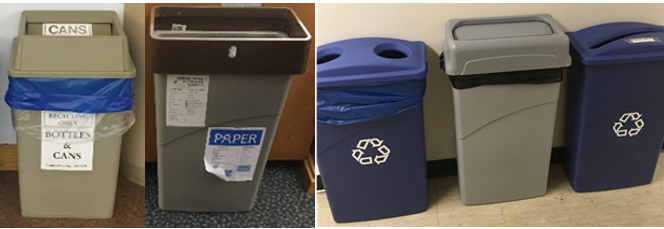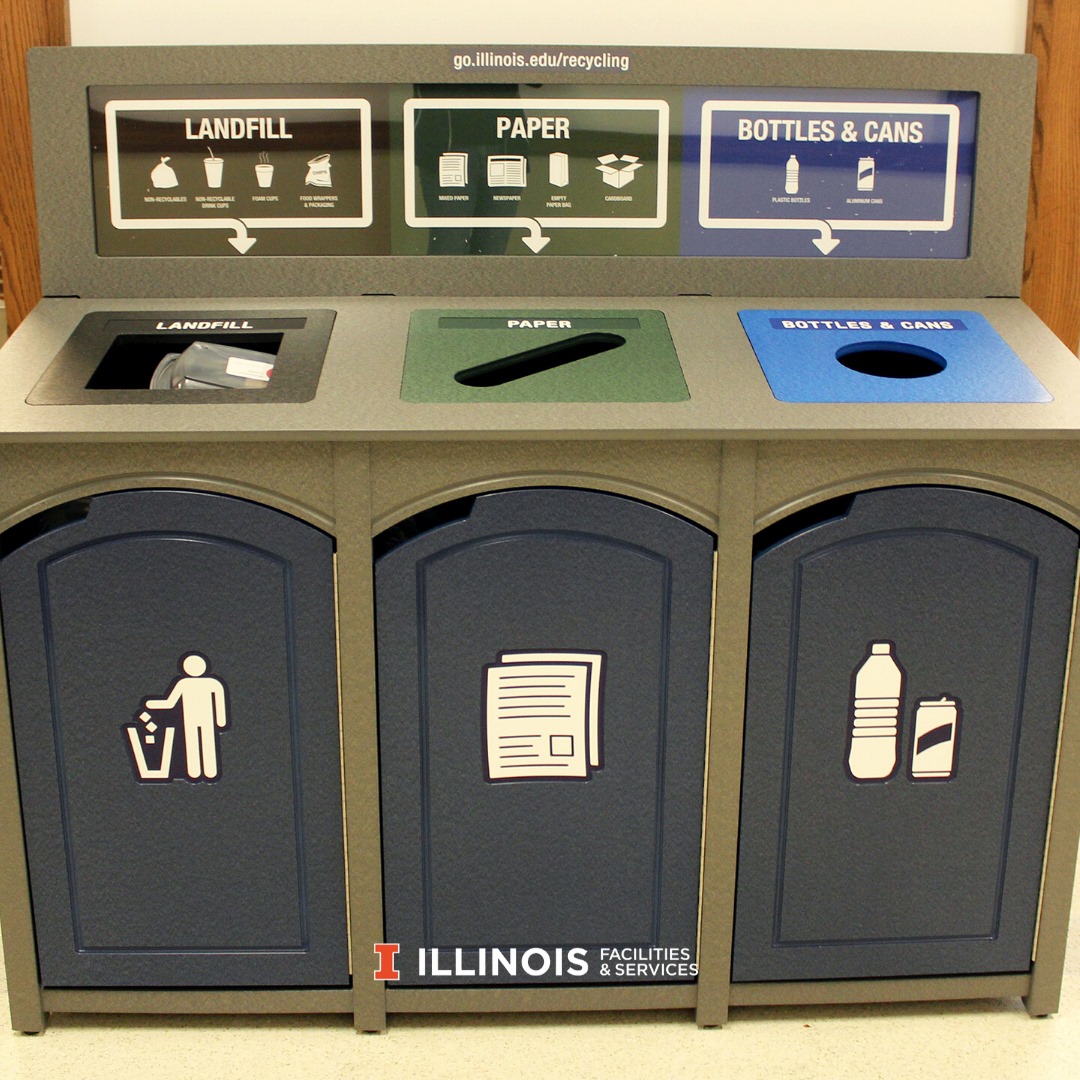 This is the first in a periodic series of Ask Me Anything (AMA) posts where ISTC features a researcher on our Facebook, Twitter, and LinkedIn accounts and solicits questions from our followers. We post the answers on the original platform and also aggregate them into a wrap-up blog post. Our first featured researcher is Joy Scrogum.
This is the first in a periodic series of Ask Me Anything (AMA) posts where ISTC features a researcher on our Facebook, Twitter, and LinkedIn accounts and solicits questions from our followers. We post the answers on the original platform and also aggregate them into a wrap-up blog post. Our first featured researcher is Joy Scrogum.
Question (from Facebook): I like to order takeout food from the many amazing restaurants in my neighborhood, but cringe at all the waste this generates. Some of this serveware I can compost and recycle, but some of it I cannot. How can I help influence the takeout containers restaurants are purchasing?
Joy: I’m glad you’re thinking about this. consumers really have more power than they tend to think. First of all, let me note that during the current pandemic, we all have to make allowances for the takeout containers being used by our local restaurants. It’s fabulous that they’re open and delivering. It’s important to support them during this difficult time and recognize that exploring new packaging is, of course, not a priority for them now. One thing you can do when ordering takeout is remember to ask a restaurant to not include unnecessary disposable items with your order (e.g. plastic utensils, napkins, condiment packets, plastic straws, etc.). That will not only prevent waste, but also save them a little money and reduce the opportunity for contamination as we practice social distancing.
When we’ve gotten past this pandemic, the easiest thing you can do is voice your concerns about packaging to the manager of a restaurant, along with your reasoning (e.g. polystyrene foam, aka Styrofoam, its persistence, difficulty/inability to recycle in your area, etc.). Always start on a positive note by letting them know what you enjoy about their food and service, if you’re a long-time customer, etc., and then tell them what’s troubling you, so the conversation doesn’t seem like an attack.
It’s also important to bear in mind that businesses, especially small ones, are making decisions based on costs. So when you speak or write to someone with your concerns, acknowledge that price is an issue for them and be prepared to provide some tools that might help them choose “greener” options available at similar or better prices than what they’re currently using. The Product Stewardship Institute (PSI) has developed the Foodware Cost Calculator, which allows restaurants or other foodservice operations to compare the costs of their currently used disposable products to reusable options (e.g. plastic utensils vs. real silverware) or alternative disposable items (e.g. recyclable, compostable, made with recycled content, etc.). PSI also has a guidance document that can help businesses reduce their plastic footprint, and understand the benefits, called 3 Steps to Reduce Plastic & Benefit Your Business. You might also point out examples of preferable packaging used by other businesses in your area or elsewhere to help make the case for what is possible. A few examples that come to mind include Just Salad, which uses reusable to-go packaging, and Farmer’s Fridge, which operates fresh-food vending machines using recyclable and reusable containers.
You can always use existing consumers ratings mechanisms, such as Yelp, Google, or Facebook, to express support for businesses using greener packaging or dismay at a restaurant with great food but problematic to-go packaging. An interesting new app from developers in Colorado is called PlasticScore. It allows you to provide feedback to restaurants on single-use plastic, as well as see waste-related ratings of nearby restaurants so you can support businesses practices that align with your values. It’s pretty new (just launched in March 2020), so you might not find a lot of information applicable to your area right now, but you could certainly contribute your own feedback to help expand their database.
Another thing to keep in mind related to compostable packaging is that sort of packaging only degrades properly in commercial composting operations (e.g. services that pick up compostables from a business or via residential drop-off or curbside composting programs). Backyard compost piles don’t attain the proper temperatures or other conditions to effectively break down those items. So before asking a restaurant to switch to compostable items, check to see if commercial composting is available in your area. It’s unfortunately true that such service is not available in many areas of Illinois.
I’m a proud member of the Illinois Food Scrap Coalition (IFSC), which is working to expand food scrap composting in our state. Check the IFSC’s online list of haulers and compost processors to see if commercial food scrap composting exists in your area. If so, you can let your favorite restaurants know, and also point out that if they decide to start composting their food scraps and compostable packaging, they could receive recognition through IFSC’s We Compost program.
Finally, you can influence restaurants and other diners through your own example. When we’re all able to dine-in at our favorite restaurants again, consider taking your own reusable food storage container or foil from home for packing any leftovers, instead of asking the restaurant for a box. When people see you doing this, it can spark conversation about packaging and may inspire someone else to do the same. Many coffee shops offer discounts for folks who bring in their own reusable mug. Be sure to ask if your favorite shop does this, so they know there is interest, and remember to take advantage of such incentives where they exist.
Note: ISTC does not endorse, either explicitly or implicitly, any particular manufacturer, vendor, product or service. Information about specific products, manufacturers or vendors is provided for reference only.


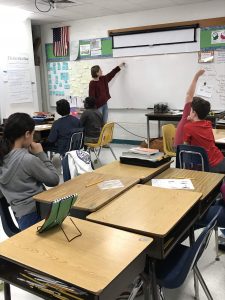 Amanda Price piloted the unit in two fifth grade science classes at Butler Elementary and Sandburg Elementary February-March 2020. Both schools are located in Springfield, IL. Amanda works as a Graduate Public Service Intern (GPSI) in the offices of Environmental Education and Community Relations at Illinois EPA. The
Amanda Price piloted the unit in two fifth grade science classes at Butler Elementary and Sandburg Elementary February-March 2020. Both schools are located in Springfield, IL. Amanda works as a Graduate Public Service Intern (GPSI) in the offices of Environmental Education and Community Relations at Illinois EPA. The 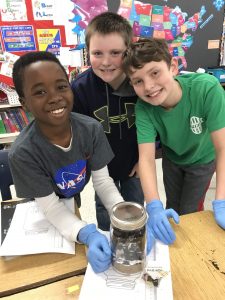 driven by student questions. It teaches students the importance of food waste reduction, landfill diversion, and composting as part of a circular food system. Students create “landfills in a jar” with materials given to them with the goal of protecting the sand, or “groundwater,” at the bottom of the jar. Students also create “compost in a jar” using fresh food scraps and other compostable materials. Students monitor their jars throughout the unit and record scientific data such as temperature and mass. They learn how bacteria act as decomposers. The unit also incorporates map-reading and asks students to think critically about the pros and cons of choosing space for new landfill construction.
driven by student questions. It teaches students the importance of food waste reduction, landfill diversion, and composting as part of a circular food system. Students create “landfills in a jar” with materials given to them with the goal of protecting the sand, or “groundwater,” at the bottom of the jar. Students also create “compost in a jar” using fresh food scraps and other compostable materials. Students monitor their jars throughout the unit and record scientific data such as temperature and mass. They learn how bacteria act as decomposers. The unit also incorporates map-reading and asks students to think critically about the pros and cons of choosing space for new landfill construction.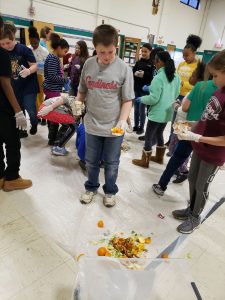 The main hands-on activity in the unit is a food waste audit, which can be performed at various scales. Students use data from the audit to calculate the estimated food wasted per person, during the school year, etc. Students end the unit by creating a community awareness or action plan to inform their community or advocate for change. A few students at Butler Elementary wrote a letter to the principal asking him to install a clock in the cafeteria so students could track how much time they had to eat. The principal took swift action and ordered the clock.
The main hands-on activity in the unit is a food waste audit, which can be performed at various scales. Students use data from the audit to calculate the estimated food wasted per person, during the school year, etc. Students end the unit by creating a community awareness or action plan to inform their community or advocate for change. A few students at Butler Elementary wrote a letter to the principal asking him to install a clock in the cafeteria so students could track how much time they had to eat. The principal took swift action and ordered the clock.
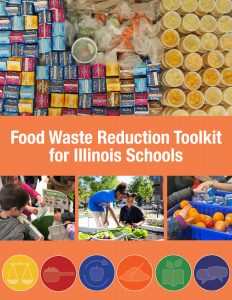 What’s the problem with food waste in schools?
What’s the problem with food waste in schools? This is the first in a periodic series of Ask Me Anything (AMA) posts where ISTC features a researcher on our Facebook, Twitter, and LinkedIn accounts and solicits questions from our followers. We post the answers on the original platform and also aggregate them into a wrap-up blog post. Our first featured researcher is
This is the first in a periodic series of Ask Me Anything (AMA) posts where ISTC features a researcher on our Facebook, Twitter, and LinkedIn accounts and solicits questions from our followers. We post the answers on the original platform and also aggregate them into a wrap-up blog post. Our first featured researcher is 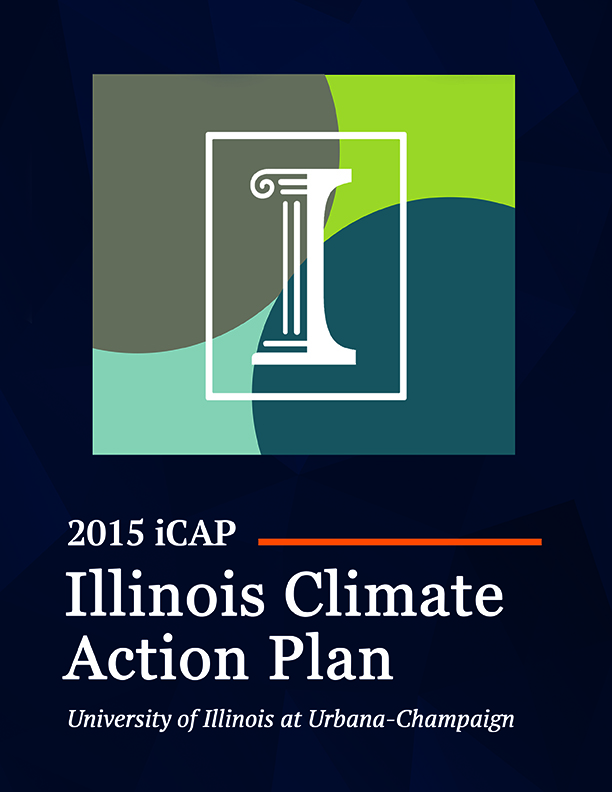 Since the development of the iCAP, the
Since the development of the iCAP, the 